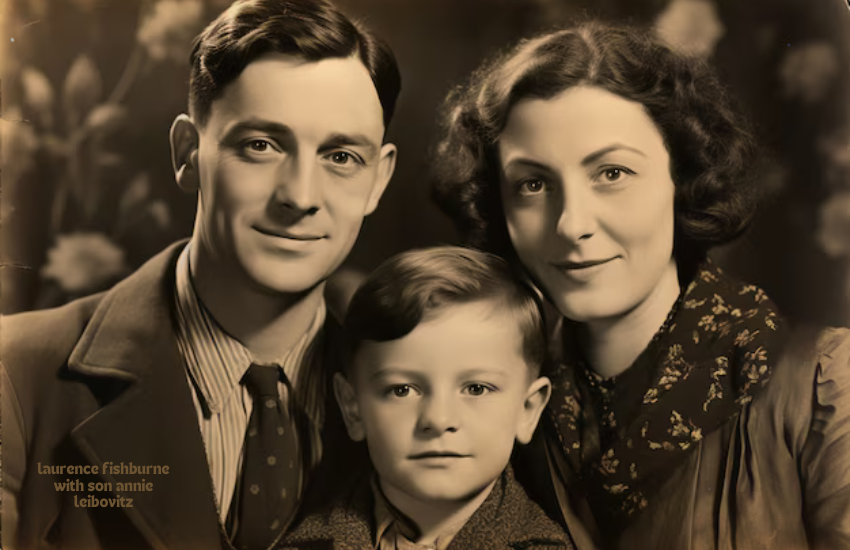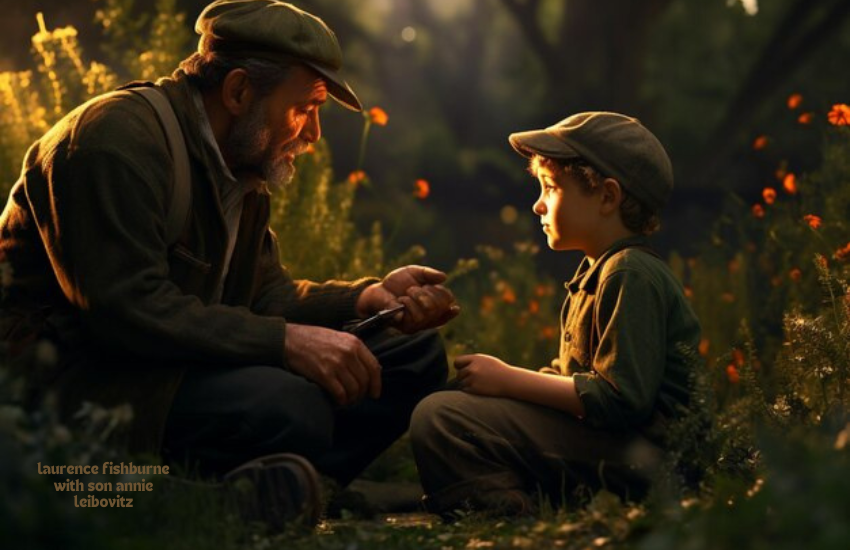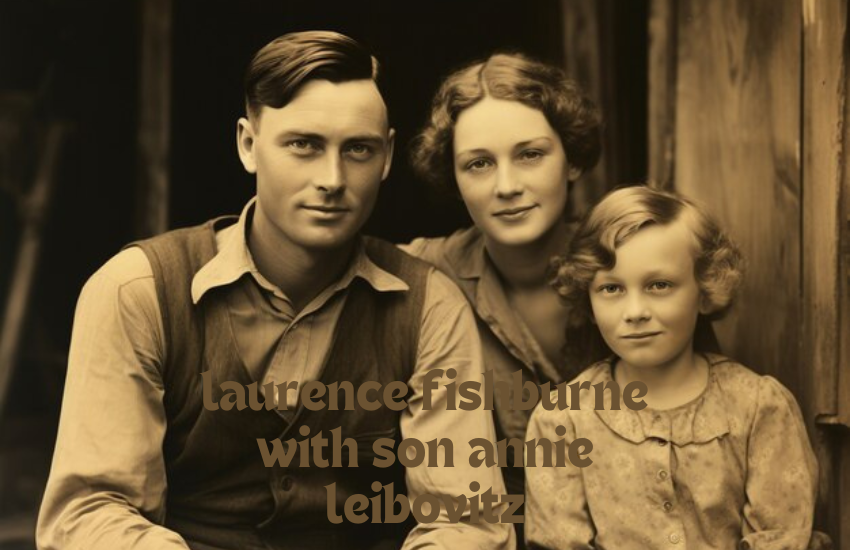The Significance of Celebrity Portraits
Laurence Fishburne: A Legendary Actor
Laurence Fishburne’s career spans over four decades, with notable roles in films such as “Boyz n the Hood,” “The Matrix” trilogy, and “What’s Love Got to Do with It.” His work on television, including his portrayal of Dr. Raymond Langston in “CSI: Crime Scene Investigation” and Pops in “Black-ish,” further cements his status as a versatile and impactful actor. Fishburne’s ability to convey complex emotions and his commanding presence make him a standout in the entertainment industry.

The Bond Between Father and Son
The portrait with his son highlights the personal side of Fishburne’s life, showcasing the bond they share. This intimate glimpse into his family life reveals a softer, more nurturing aspect of Fishburne, contrasting with the often intense characters he portrays on screen. The dynamic between father and son is a universal theme that resonates with many, adding layers of meaning to the portrait.
Annie Leibovitz: A Renowned Photographer
Annie Leibovitz is one of the most celebrated photographers of our time. Her career began at Rolling Stone magazine, where she quickly became known for her distinctive style and ability to capture the essence of her subjects. Leibovitz’s work with Vanity Fair and Vogue has produced some of the most iconic images in contemporary photography. Her portraits are known for their narrative quality, often telling a story that goes beyond the frame.
The Concept of the Portrait
The concept for the portrait of Laurence Fishburne with his son likely stemmed from Leibovitz’s desire to explore the themes of legacy, family, and identity. By photographing Fishburne with his son, Leibovitz not only highlights their physical resemblance but also hints at the passing of wisdom and tradition from one generation to the next. This layered approach adds depth to the portrait, inviting viewers to consider the broader context of familial relationships.
Setting and Composition
The setting and composition of the portrait are crucial elements that contribute to its overall impact. Leibovitz is known for her meticulous attention to detail, and this portrait is no exception. The choice of setting, whether it be a domestic space or a more abstract backdrop, helps to frame the subjects and create a specific mood. The composition, including the placement of Fishburne and his son, the use of light and shadow, and the positioning of the camera, all work together to draw the viewer’s eye and evoke an emotional response.
Technical Aspects
Leibovitz’s technical prowess is evident in every aspect of the portrait. From the choice of camera and lens to the lighting setup, each decision is carefully considered to enhance the final image. Natural light, artificial light, or a combination of both can be used to create different effects, such as warmth, intimacy, or drama. The technical aspects of the portrait are not just about showcasing Leibovitz’s skill but also about bringing out the best in her subjects.
Emotional Impact
The emotional impact of the portrait is one of its most significant attributes. The expressions, body language, and interaction between Fishburne and his son convey a sense of love, respect, and continuity. This emotional depth makes the portrait more than just a visual record; it becomes a poignant reflection on the nature of fatherhood and the enduring bond between parent and child.
Cultural and Social Context
The cultural and social context in which the portrait was created adds another layer of meaning. As a prominent African American actor, Fishburne’s portrayal with his son can be seen as a statement on the importance of representation and visibility. It also speaks to broader themes of family and heritage within the African American community. The portrait becomes a piece of cultural commentary, reflecting and contributing to ongoing conversations about identity and legacy.
Artistic Interpretation
Art is often open to interpretation, and this portrait is no exception. Different viewers may see different things in the image, depending on their perspectives and experiences. Some may focus on the technical brilliance of the photograph, while others may be more drawn to the emotional or cultural aspects. This multiplicity of interpretations is one of the strengths of Leibovitz’s work, allowing it to resonate with a diverse audience.
Public and Critical Reception
The public and critical reception of the portrait has been overwhelmingly positive. Critics have praised Leibovitz’s ability to capture the essence of her subjects, while audiences have responded to the emotional and relatable aspects of the image. The portrait has been featured in various exhibitions and publications, further solidifying its status as a significant work of art.
The Legacy of the Portrait
The lasting impact of the portrait on art and photography cannot be understated. It serves as a testament to Leibovitz’s skill and vision, as well as Fishburne’s enduring legacy as an actor and father. The portrait will likely continue to be celebrated and studied for years to come, both for its artistic merit and its cultural significance.

Other Iconic Works by Leibovitz
Annie Leibovitz has created many other iconic portraits throughout her career. From her famous photograph of John Lennon and Yoko Ono to her striking images of Queen Elizabeth II, Leibovitz’s body of work is a testament to her ability to capture the human spirit. Each portrait tells a story, revealing something profound about its subject.
Conclusion
In conclusion, the portrait of Laurence Fishburne with his son by Annie Leibovitz is a powerful and evocative image that transcends the boundaries of celebrity photography. It captures the essence of a father-son relationship, while also exploring broader themes of legacy, identity, and representation. Through her technical skill and artistic vision, Leibovitz has created a timeless piece that resonates on multiple levels, inviting viewers to reflect on their own familial bonds and cultural heritage.
Frequently Asked Questions
1. Who is Annie Leibovitz?
Annie Leibovitz is a renowned American portrait photographer known for her engaging and dramatic celebrity portraits. Her work has been featured in magazines such as Rolling Stone, Vanity Fair, and Vogue.
2. What is the significance of celebrity portraits?
Celebrity portraits offer a glimpse into the personal lives of public figures, humanizing them and making them more relatable. They also contribute to cultural discourse and shape public perception of these figures.
3. What are some notable works by Laurence Fishburne?
Laurence Fishburne is known for his roles in “The Matrix” trilogy, “Boyz n the Hood,” “What’s Love Got to Do with It,” and television series like “CSI: Crime Scene Investigation” and “Black-ish.”
4. How does Annie Leibovitz approach her photography?
Annie Leibovitz is known for her narrative style, capturing not just the physical likeness but also the essence and story of her subjects. She pays meticulous attention to setting, composition, and technical details.
5. Why is the portrait of Laurence Fishburne with his son significant?
The portrait is significant because it showcases the personal side of Fishburne, highlighting the bond with his son. It also speaks to themes of legacy, family, and identity, making it a poignant and culturally resonant image.
6. How was the public and critical reception of this portrait?
The portrait received positive reception from both the public and critics, praised for its emotional depth and technical excellence. It has been featured in various exhibitions and publications, solidifying its status as a significant work of art.


